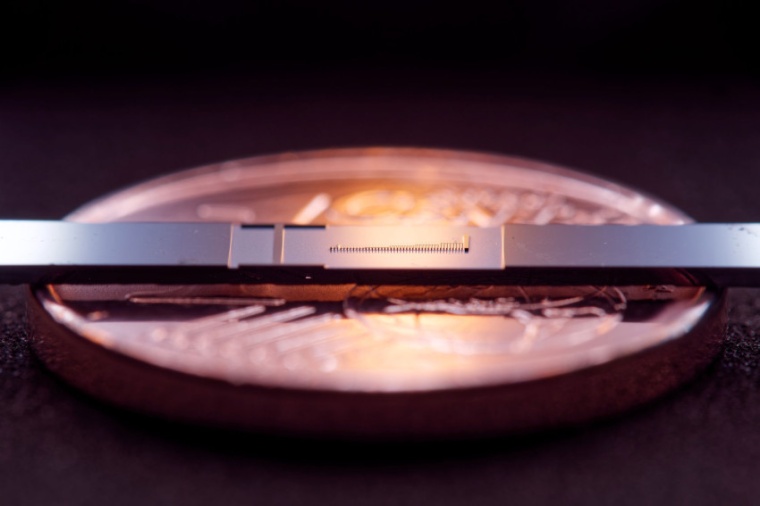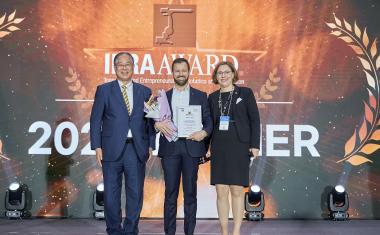Nanophotonic electron accelerator works
German researchers succeed for the first time in accelerating electrons using a nano device.
Particle accelerators are crucial tools in a wide variety of areas in industry, research and the medical sector. The space these machines require ranges from a few square meters to large research centers. Using lasers to accelerate electrons within a photonic nanostructure constitutes a microscopic alternative with the potential of generating significantly lower costs and making devices considerably less bulky. Until now, no substantial energy gains were demonstrated. In other words, it has not been shown that electrons really have increased in speed significantly. A team of laser physicists at Friedrich-Alexander-Universität Erlangen-Nürnberg (FAU) has now succeeded in demonstrating the first nanophotonic electron accelerator – at the same time as colleagues from Stanford University.

Physicists around the globe are working on dielectric laser acceleration – nanophotonic accelerators. The structures they use are merely 0.5 millimeters in length, and the channel the electrons are accelerated through is only roughly 225 nanometers in width, making these accelerators as small as a computer chip. Particles are accelerated by ultrashort laser pulses illuminating the nanostructures. “The dream application would be to place a particle accelerator on an endoscope in order to be able to administer radiotherapy directly at the affected area within the body,” explains Tomáš Chlouba. This dream may still be far beyond the grasp of the FAU team led by Peter Hommelhoff and consisting of Tomáš Chlouba, Roy Shiloh, Stefanie Kraus, Leon Brückner and Julian Litzel, but they have now succeeded in taking a decisive step in the right direction by demonstrating the nanophotonic electron accelerator. “For the first time, we really can speak about a particle accelerator on a chip,” enthuses Roy Shiloh.
Just over two years ago the team succeeded in using the alternating phase focusing (APF) method from the early days of acceleration theory to control the flow of electrons in a vacuum channel over long distances. This was the first major step on the way towards building a particle accelerator. Now, all that was needed to gain major amounts of energy was acceleration. “Using this technique, we have now succeeded not only in guiding electrons but also in accelerating them in these nano-fabricated structures over a length of half a millimeter,” explains Stefanie Kraus. Whilst this might not sound like much of an achievement to many, it is a huge success for the field of accelerator physics. “We gained energy of 12 kiloelectron volts. That is a 43 percent gain in energy,” explains Leon Brückner.
In order to accelerate the particles over such large distances, the physicists combined the APF method with specially developed pillar-shaped geometrical structures. This demonstration is just the beginning, however. Now the aim is to increase the gain in energy and electron current to such an extent that the particle accelerator on a chip is sufficient for applications in medicine. For this to be the case, the gain in energy would have to be increased by a factor of approximately 100. “In order to achieve higher electron currents at higher energies at the output of the structure, we will have to expand the structures or place several channels next to each other,” Tomáš Chlouba explains the next steps.
What the Erlangen laser physicists succeeded in doing was demonstrated almost simultaneously by colleagues at Stanford University in the United States: Their results are currently under review, but can be viewed on a repository. The two teams are working together on the realization of the “Accelerator on a chip” in a project funded by the Gordon and Betty Moore Foundation. “In 2015, the FAU and Stanford led ACHIP team had a vision for a revolutionary approach to particle accelerator design”, said Gary Greenburg of the Gordon and Betty Moore Foundation, “and we are delighted that our support has helped turn this vision into reality.” (Source: FAU)
Link: Laserphysics, Friedrich-Alexander-Universität Erlangen-Nürnberg (FAU), Erlangen, Germany











